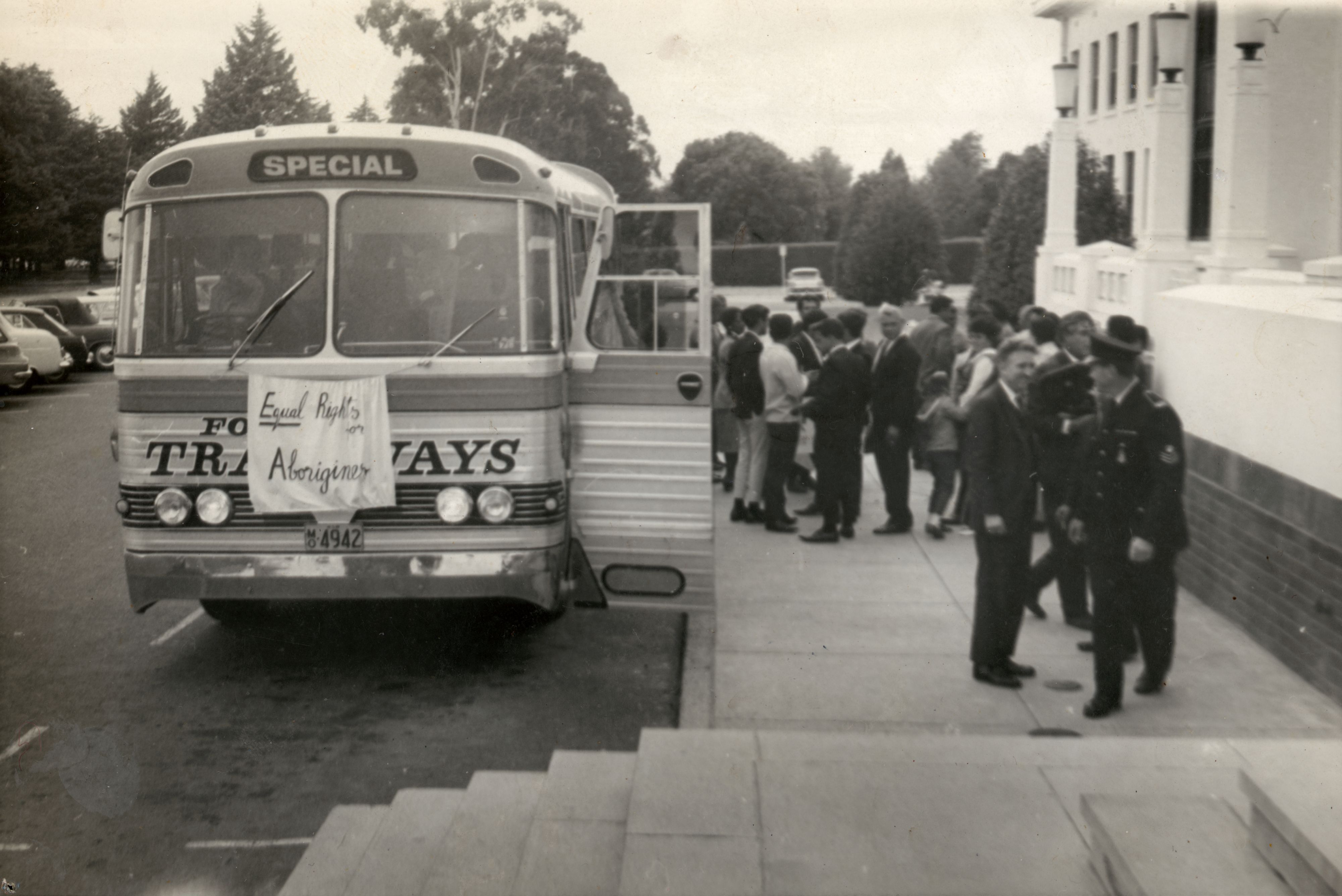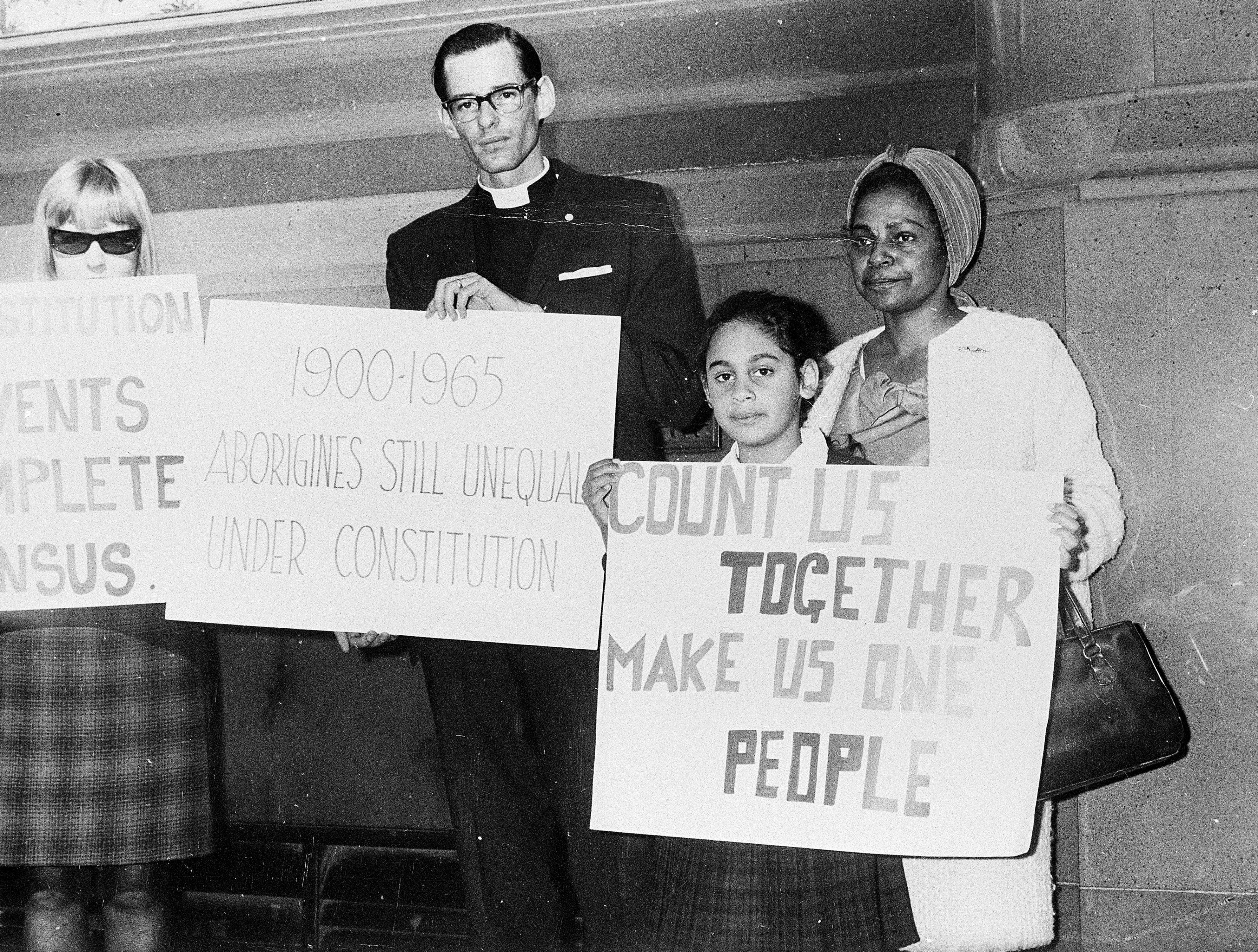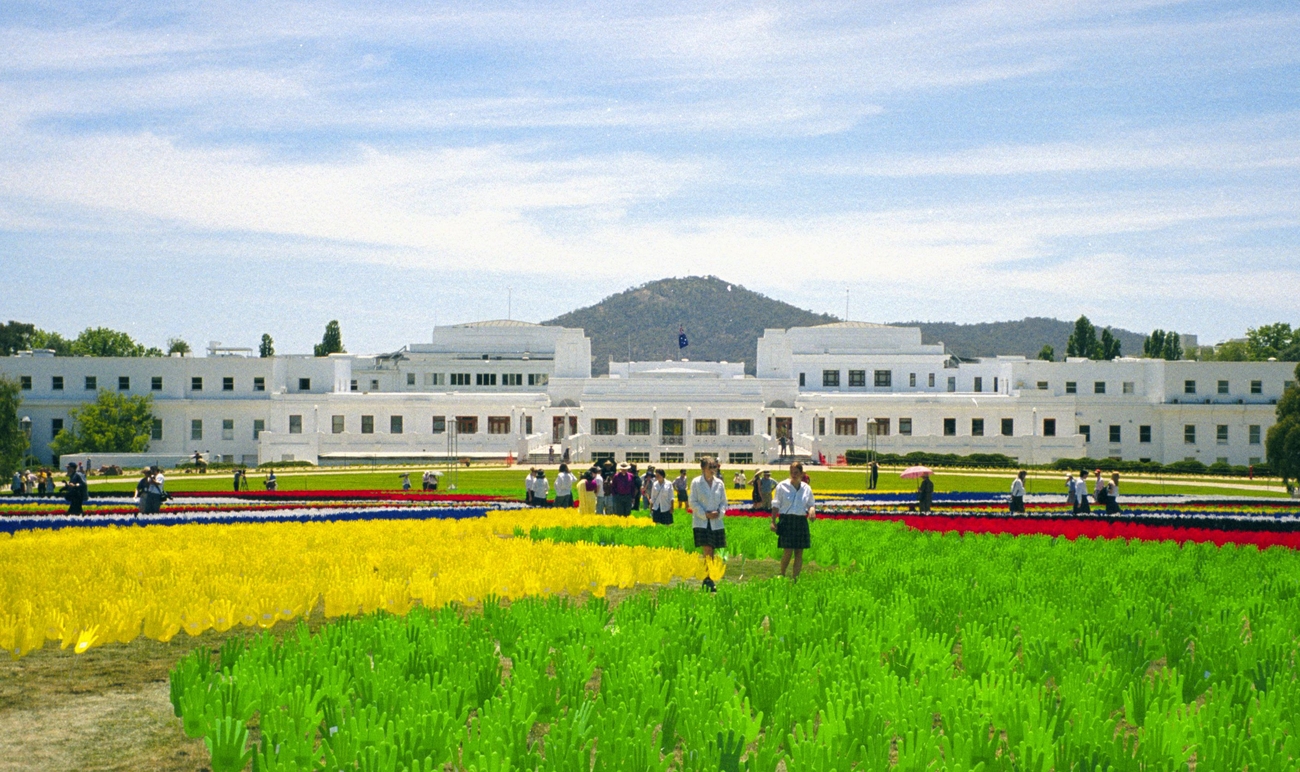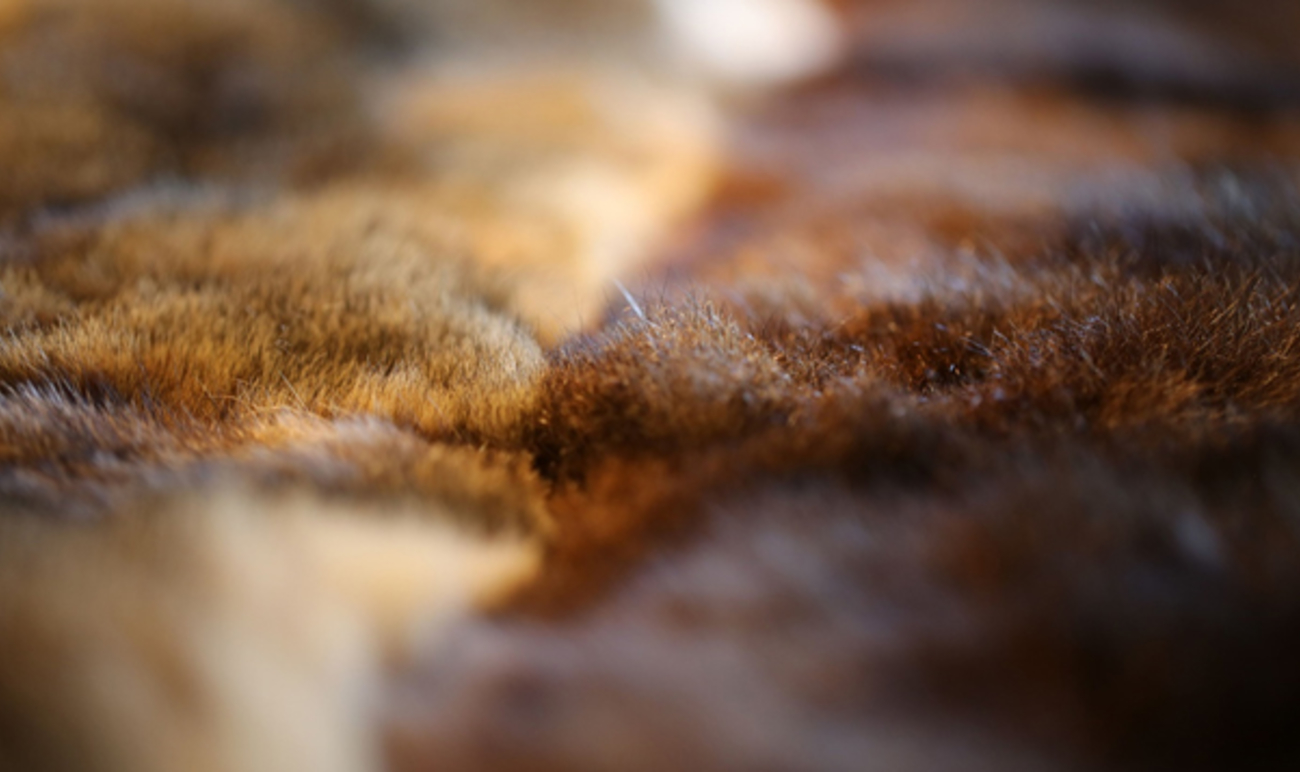Pictures from the AIATSIS photographic collection feature in the Museum of Australian Democracy’s contribution to this year’s Enlighten Festival.
The featured photographs are from the Chicka Dixon Collection Equal Rights for Aborigines - protest activities in 1965 and the Jack Horner Collection The 1967 referendum: photographic portraits. These images show a series of protests carried out in 1965 and 1966 by supporters for a referendum to alter the constitution.
Chicka Dixon (1928-2010) was an Aboriginal leader and activist. He was a tireless campaigner for the rights of Indigenous Australians and played a major role in the campaign for the 1967 Referendum and the establishment of the Tent Embassy in 1972.
The images in his collection were taken at a silent vigil held in front of Parliament House on 30 November 1965. A group of 35 protesters travelled from Sydney to Canberra by bus to attend the demonstration. Among the demonstrators were some of the leading figures in the Aboriginal rights movement, including Charles Perkins, Pastor Sir Doug Nicholls, Faith Bandler and Oodgeroo Noonuccal (Kath Walker).
It was the first time an all-Aboriginal delegation had gone to Parliament House to lobby for changes in legislation. The delegation held meetings with politicians from all major parties including Billy McMahon, Harold Holt and Gough Whitlam.
Dixon recalled the day of the demonstration in a 2002 interview with AIATSIS:
We did a trick on them – You see. In that era, the Vietnam War, they were protesting against the Vietnam War. Lots of things were happening worldwide. Protesting against Apartheid. Most of the protesters were burning their draft cards and refusing to go to Vietnam War and they were protesting in their jeans and thongs, so we were outsmarting them. We were all dressed up in suits you’ll notice. We did that purposely to throw them off guard but it was just a ploy… we were the short haired radicals.
Jack Horner was an advocate for Indigenous rights. He joined the Australian-Aboriginal Fellowship in 1957 and became vice-president of the Federal Council for Aboriginal Advancement (later the Federal Council for the Advancement of Aborigines and Torres Strait Islanders, FCAATSI) in 1959.
FCAATSI would play a major role in lobbying and campaigning for a referendum to change the constitution.
The image from the Horner Collection shows the well-known activist Faith Bandler, her daughter Lilon Bandler, the Reverend George Garnsey and an unidentified university student. The photograph was taken on 30 June 1966 at a Census Day demonstration held outside the Commonwealth Bank in Martin Place, Sydney.
The protest, organised by FCAATSI and the student organisation ABSCHOL, focused on the fact that Section 127 of the Constitution stated that “In reckoning the numbers of the people of the Commonwealth, or of a State or other part of the Commonwealth, [A]boriginal natives shall not be counted”.
The protesters were highlighting this injustice and calling for people to write to their Federal Member of Parliament and demand a referendum be held.
These images are only three of more than 650,000 photographs held in the Australian Institute of Aboriginal and Torres Strait Islander Studies’ Pictorial collection. This is the world's most comprehensive photographic record of Australia's Indigenous peoples.





